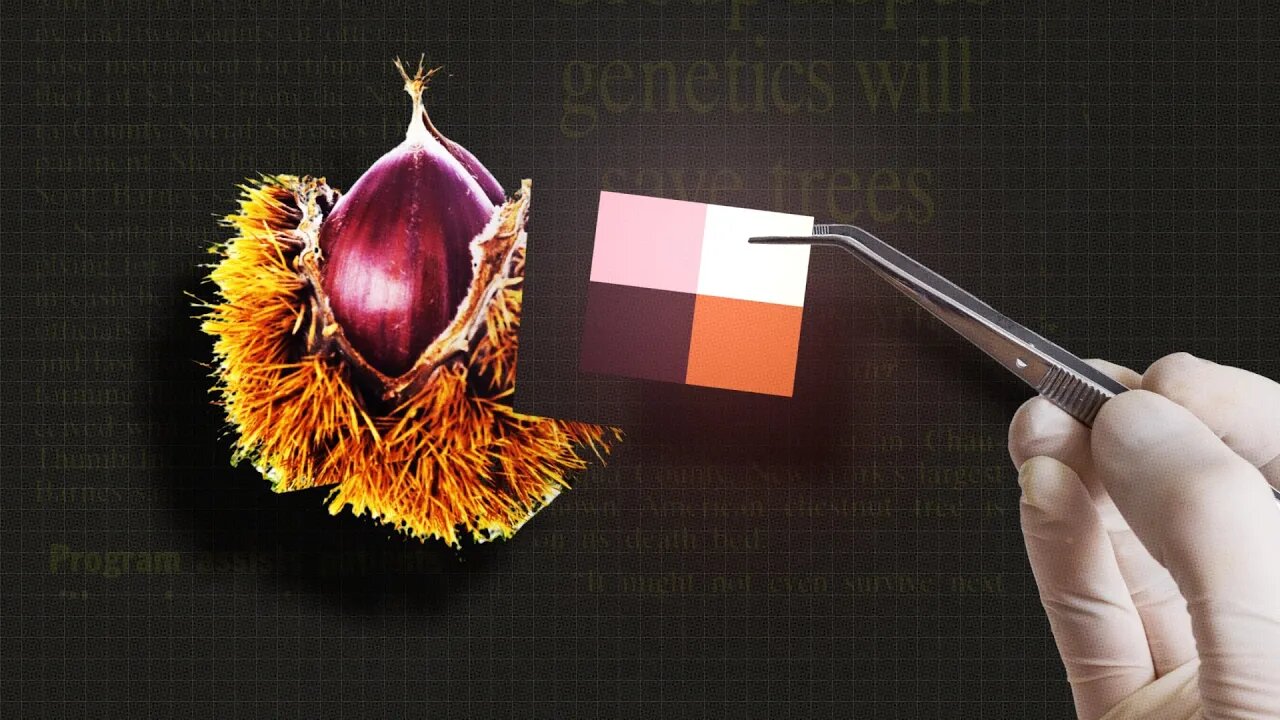Premium Only Content

Can genetic engineering save the American Chestnut?
For generations, the American Chestnut dominated East Coast forests—a tree vital to both wildlife and humans and prized for its bountiful nuts and rot-resistant lumber. Around the turn of the 19th century, a devastating blight began to wreak havoc on the species, wiping out an estimated four billion trees. Today American Chestnuts rarely survive to maturity, making them functionally extinct.
"The trees [are] living in the understory of the forest…re-sprouting and dying back over and over again," says Jared Westbrook, director of science at the American Chestnut Foundation.
Now a team of scientists and volunteers may have found a way to use genetic engineering to bring back the tree.
"We want to re-wild the American Chestnut so it can resume evolving on its own, forming a self-sustaining population," says Westbrook.
The chestnut blight fungus secretes an acid that kills the tree bark and, eventually, the tree itself. By inserting a gene from wheat, scientists at the State University of New York College of Environmental Science and Forestry (SUNY-ESF) have found a way to detoxify that acid, creating a blight-resistant version of the tree.
"Basically, this tree is at the point where we're ready to get it out to the public," says William Powell, director of the American Chestnut Research & Restoration Program at SUNY-ESF. "But because we use the techniques of genetic engineering, we do have another hurdle to get over, and that is the regulatory review."
If they gain regulatory approval, the American Chestnut will become the first genetically engineered plant released with the expressed purpose of spreading in the wild.
"We want to make sure we're not creating more problems, so there has to be some kind of, like, evaluation of these things. But there's a double standard," says Westbrook. "With biotechnology, it's a smaller change, but that's evaluated under such scrutiny compared to [what] we do regularly with breeding."
"We are making smaller changes to the tree," says Powell. "Therefore, if you want something that's more original, if you want something that's more already adapted to the forest ecosystem, then genetic engineering is the way to go."
If they succeed, Westbrook believes this could be the beginning of a new chapter in environmental restoration.
"This can set an example for other groups to be able to use biotechnology for restoration and conservation. And I think that option can and should be open."
Produced, edited, and narrated by Meredith Bragg; graphics by Bragg and Isaac Reese.
-
 1:08:46
1:08:46
ReasonTV
21 days agoWhat's in Trump's "One, Big Beautiful Bill"? Former Reagan budget chief David Stockman
5961 -
 3:00:11
3:00:11
TimcastIRL
3 hours agoTHE WAR IS OVER, Trump Announces CEASEFIRE In Israel Iran War | Timcast IRL
226K152 -
 LIVE
LIVE
RalliedLIVE
6 hours ago $4.33 earnedMonday WZ - Specialist Addict Gets Wins
1,011 watching -
 LIVE
LIVE
SpartakusLIVE
4 hours agoSpart RETURNS || The Masses REJOICE
378 watching -
 2:54:15
2:54:15
Barry Cunningham
5 hours agoBREAKING NEWS: THERE'S SO MUCH WINNING FOR PRESIDENT TRUMP AND AMERICA TONIGHT!!
51.7K43 -
 DVR
DVR
Adam Does Movies
1 day ago $2.80 earnedIs 28 Years Later A Good Movie? - Live Debate
21.7K1 -
 LIVE
LIVE
Spartan
7 hours agoPro Halo Player | Sens Crisis Grind | Ranked Arena, Probably SWTOR at some point
210 watching -
 LIVE
LIVE
7ninja7
2 hours agoIF u have time just say HI
80 watching -
 1:52:40
1:52:40
RiftTV/Slightly Offensive
9 hours agoIran ATTACKS U.S. Airbases in Qatar, Escalation IMMINENT? | The Rift | Guest: Liz Crokin
37K13 -
 4:01:21
4:01:21
The Sufari Hub
5 hours ago🔴TAKING ON THE MAFIA - Spider-Man Remastered - The city that never sleeps
11.6K1